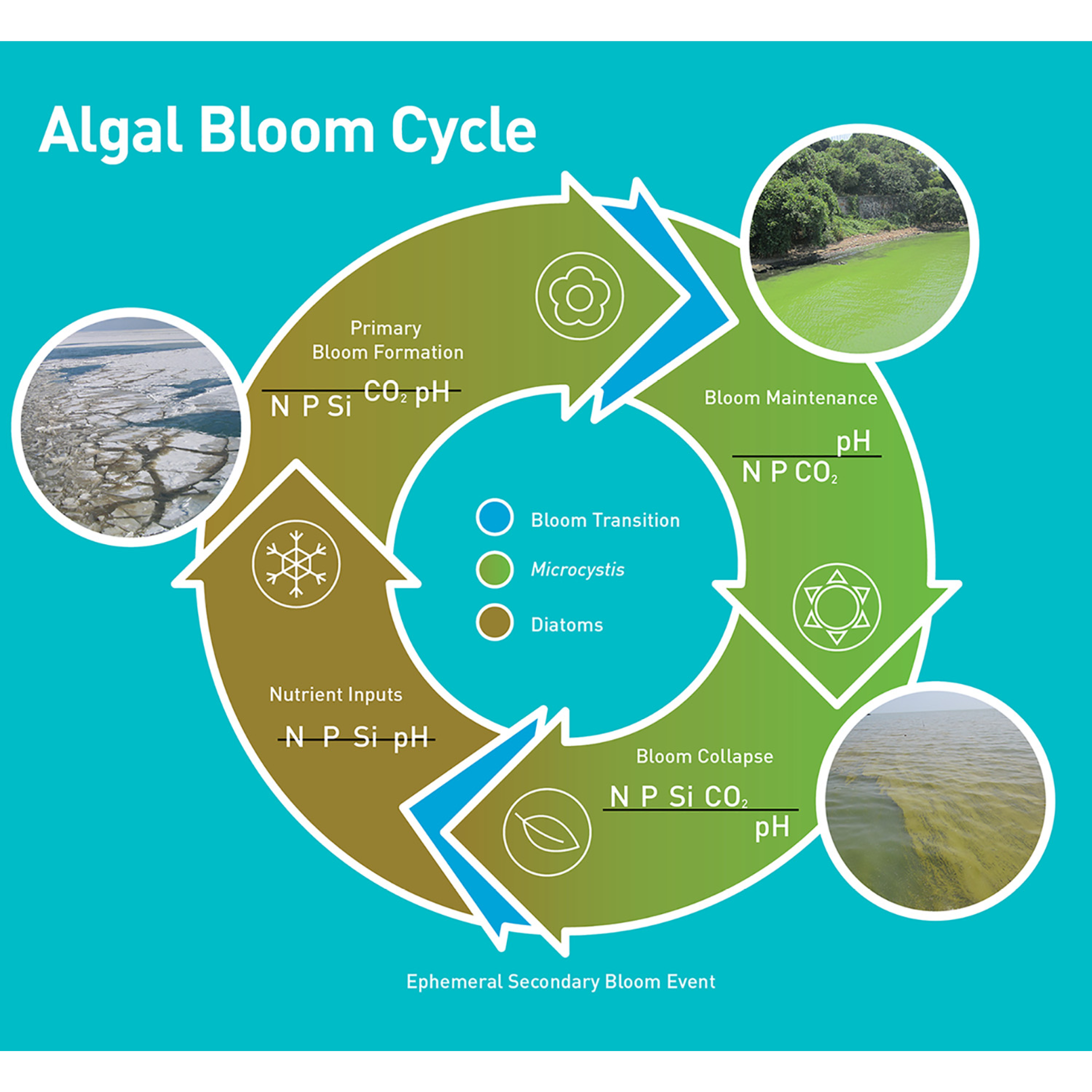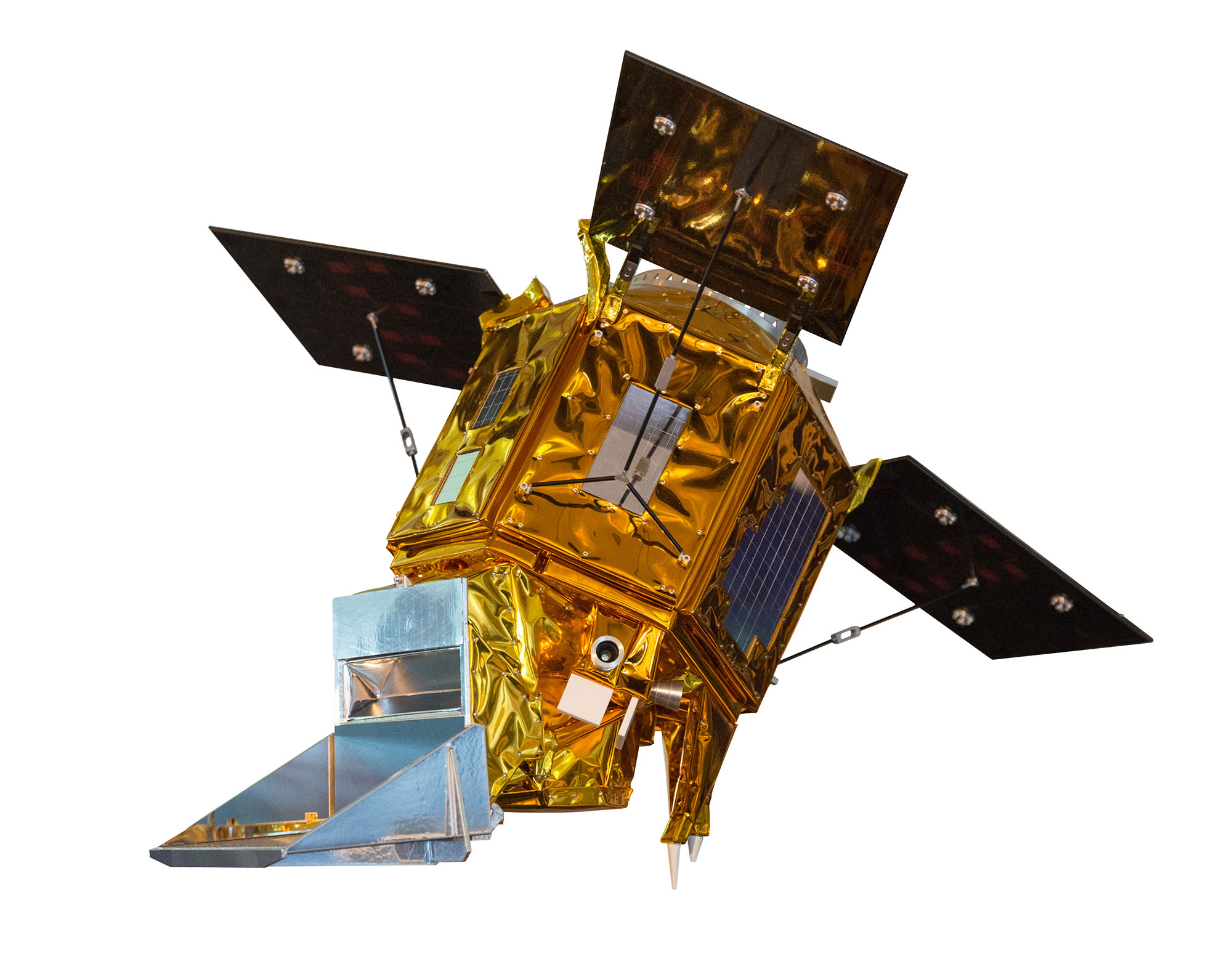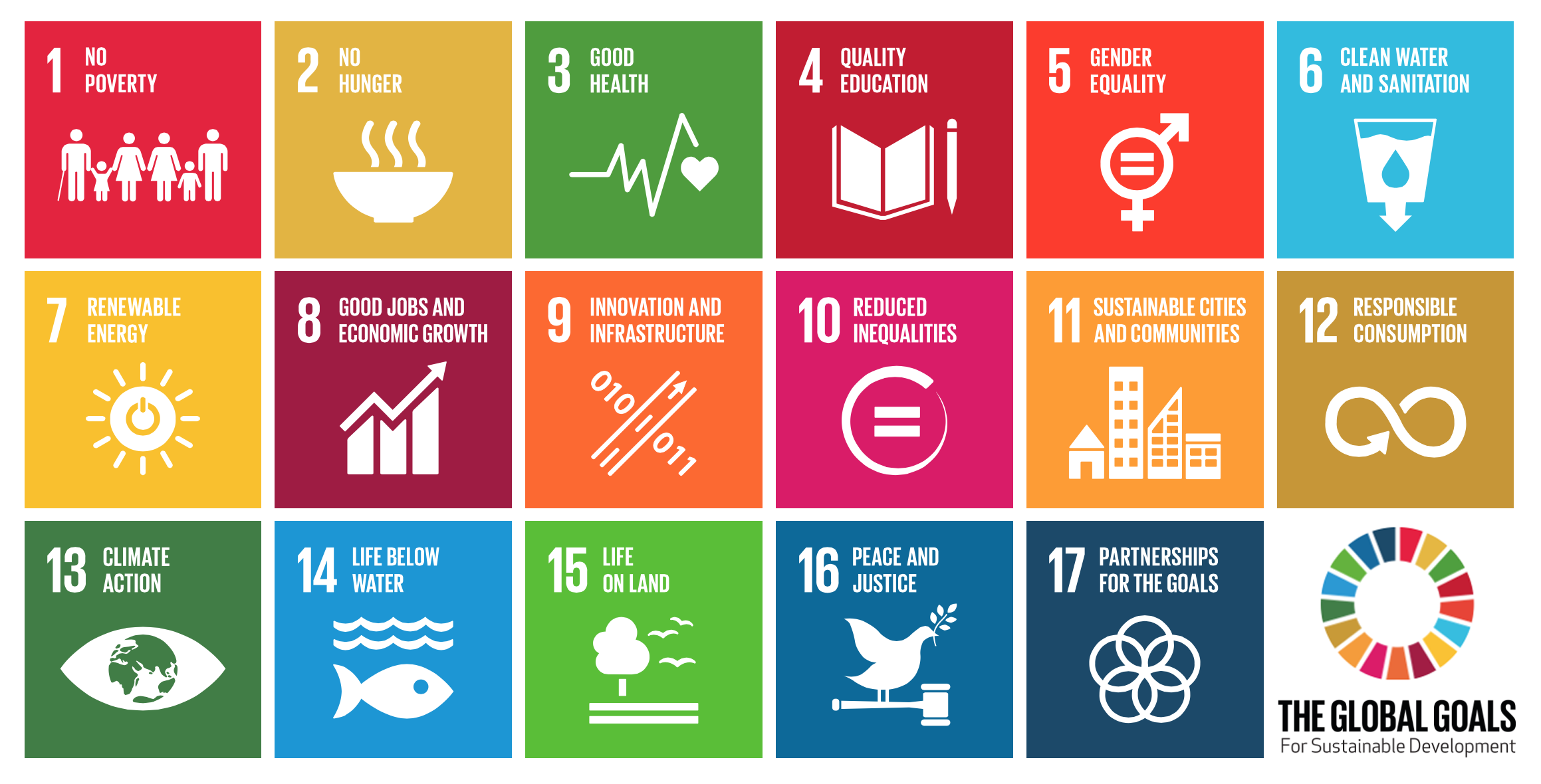
A phenomenon that occurs when due to human activities, a species has access to more nutrients than normal, causing a bloom in population. This leads to an imbalance in the ecosystem that is detrimental to other species.
The Algae Bloom, in particular, is one resulting from cultural eutrophication, where the two main contributors of minerals and nutrients into the water are raw sewage and agriculture. However, any usage including recreational use can contribute to this process and is one that has occurred historically. Eutrophication, most commonly the accumulation of phosphate and nitrate, occurs naturally and any human presence has meant the existence of cultural eutrophication. Say in the medieval era, the effects of this accumulation may have been no less than it is now, but a change did occur in that the effects are no longer localized and the Algae Blooms are being seen at a global scale. This is partially due to densification of population and industrial fertilizer use, however of note is the movement of nutrients in the form of food which also has a water amount attached in terms of production. Beyond the globalizing nature of agriculture, animal husbandry contributes to this process in the form of animal sewage along with any fertilizers used to produce any feed, most of which ends up in the water cycle.
As water tends to end up in the ocean, coastal and delta areas tend to be the most impacted by Algae Blooms, but areas with low water exchange like an Endorheic Basin are also particularly susceptible. Additionally, with the fracturing of the water cycle through dams, sewers, and globalized sources of phosphorus like the Kola Peninsula, the effects and contributions to Algae Blooms can reach far inland. However, cultural eutrophication in itself is a natural part of human existence and phenomenon such as the “Red Tide” are from extreme cases resulting from an incomplete biogeochemical water cycle.
← Back to Lexicon
Seasonal bloom cycle of a cyanobacteria, Microcystis, that is prevalent in freshwater
Sources: Wilhelm, Steven W., George S. Bullerjahn, and R. Michael L. McKay. "The Complicated and Confusing Ecology of Microcystis Blooms." mBio 11.3 (2020): e00529-20. Web. 03 May. 2021.
Sources: Wilhelm, Steven W., George S. Bullerjahn, and R. Michael L. McKay. "The Complicated and Confusing Ecology of Microcystis Blooms." mBio 11.3 (2020): e00529-20. Web. 03 May. 2021.
- Wassmann, Paul. (2005). Cultural eutrophication: perspectives and prospects. Drainage Basin Inputs and Eutrophication: An Integrated Approach.
Blue Flag Award
![]()

“If you can't measure it, you can't improve it.” This was said by the theorist of business and management Peter Drucker. If the quality or quantity of something is not worth measuring and recording,what is the chance that it will be improved or cared about? Reflecting this statement, many campaigns now focus on measuring and recording values they care about. By simply measuring pollution, the number of cyclists or the variety of species on a peice of land, the case is made for why they are important and why the situation should be improved.
In parenting the sticker chart is a common tool for encouraging good behaviour in children. Mirco-rewards may cost little to give, but the result of giving them is valuable and reinforces positive behaviour. This technique of positive reinforcement does not just work on children.
The Blue Flag award is given to beaches and marinas that meet an extensive set of criteria related to quality, safety, environmental education, the provision of services and environmental management; for beaches there are almost 30 different criteria. Locations award it are widely recognised as being of excellent quality, and the award is well known by the public. The award was started in 1987 by the NGO, the Foundation for Environmental Education in Europe (FEEE). Due to global interest, in 2001 the foundation dropped its association to only Europe and became FEE. The foundation is funded by its membership of state governments. In 2015, 4,154 blue flags were flying at beaches, marinas and tourism businesses. The top five nations with blue flags were Spain, Turkey, Greece, France and Italy, all countries with valuable beach tourism industries. Whilst the award can be seen as a micro-reward like the child’s sticker chart, as it has no financial prize attached to it, it is a valuable tool in branding resorts and encouraging tourism and is thereby sought after.
Whilst many understand the blue flag to be a mark of quality and high environmental standards, few would know the extensiveness of the criteria. This may not be a bad thing, if the criteria are robustly written it can lead to wide benefits beyond those assumed by visitors. However if a lack of a blue flag is then taken to be a sign of poor quality this could be problematic. A beautiful, remote beach may have the highest environmental standards and excellent conditions, but due to a lack of other infrastructure such as a beach map, disabled toilet facilities or easy access, the beach would not qualify for the award. It may even be that some locations would qualify, but the administration simply has not happened. If these locations’ lack of blue flags was taken as a negative judgement of them, this would paint a false picture.
← Back to Lexicon
King Willem-Alexander raising the blue flag
Sources: The Foundation for Environmental Education
Sources: The Foundation for Environmental Education

'Sentinel-5 Precursor is the first mission of the Copernicus Programme dedicated to monitoring air pollution. Its instrument is an ultraviolet, visible, near and short-wavelength infrared spectrometer called Tropomi. The Satellite is built on a hexagonal Astrobus L 250 satellite bus equipped with S- and X-band communication antennas, three foldable solar panels generating 1500 watts and hydrazine thrusters for station-keeping.'
While in a sun-synchronous orbit at 834 km, the satellite has a continuous view on planet earth at 13:30 local time, providing data related to air pollution through the Copernicus Open Access Hub. Anyone can access this information, which in turn is made possible by joint efforts by international organizations, both public and private.
Sentinel-5P was built by Astrium (United Kingdom), launched from the Plesetsk Cosmodrome in Mirny, Russia by Eurockot Launch Services GmbH, a commercial spacecraft launch provider based in Bremen, Germany. It carries the Tropomi spectrometer—the Tropospheric Monitoring Instrument which was constructed by 'a joint venture between the Netherlands Space Office NSO (formerly NIVR), the Dutch Royal Meteorological Institute KNMI, the Dutch Institute for Space Research SRON, TNO and Dutch Space.'
Within the Sentinel program, Sentinel-5 was followed up by Sentinel-6, manufactured by Airbus Defence and Space and launched in California by SpaceX.
← Back to Lexicon
While in a sun-synchronous orbit at 834 km, the satellite has a continuous view on planet earth at 13:30 local time, providing data related to air pollution through the Copernicus Open Access Hub. Anyone can access this information, which in turn is made possible by joint efforts by international organizations, both public and private.
Sentinel-5P was built by Astrium (United Kingdom), launched from the Plesetsk Cosmodrome in Mirny, Russia by Eurockot Launch Services GmbH, a commercial spacecraft launch provider based in Bremen, Germany. It carries the Tropomi spectrometer—the Tropospheric Monitoring Instrument which was constructed by 'a joint venture between the Netherlands Space Office NSO (formerly NIVR), the Dutch Royal Meteorological Institute KNMI, the Dutch Institute for Space Research SRON, TNO and Dutch Space.'
Within the Sentinel program, Sentinel-5 was followed up by Sentinel-6, manufactured by Airbus Defence and Space and launched in California by SpaceX.
← Back to Lexicon
Sentinel 5-P, a monitoring satellite launched and maintained through international efforts
Sources: Wikipedia user SkywalkerPL. Sentinel 5-P
Sources: Wikipedia user SkywalkerPL. Sentinel 5-P
- European Space Agency, Agreement between the Netherlands and ESA signed for Sentinel-5 Precursor instrument
- Tropomi, TROPOspheric Monitoring Instrument
- European Space Agency, Sentinel-5P internal view

The “Street Section” replenishes the possibilities of a two-dimensional drawing. From the past till now, it has been the main tool for urban planning and in particular for outlining its challenges. The sectoral approach is mainly used to describe the integrated urban subsystems, such as mobility networks, sewage systems, urban fabric, and other infrastructures. The section is seeking sustainable design solutions for the challenging and complex nature of our cities.
Looking back in the history of urban planning, in particular in today’s immense metropolis, the street section is encountered, contrary to our preconception that infamous plans were built, as the main tool of exploring the function of the city. Idelfons Cerda, the protagonist of Barcelona’s urban development, is a case in point. His main attempt in “the Eixample extension of Barcelona'' was the improvement of the civilization through the city’s adaptation in the new needs of transportation and hygiene.The most representative image of his design might be the Original plan of the extension of Barcelona (1859) that illustrates the infamous grid, however Cerda defined the system of Barcelona’s urban utility network by the “Street Section”. In the Atlas of the Barcelona Ensanche Draft, published in 1855, a series of sections that reveal the underground systems of Barcelona in combination with the city above, were represented with the tool of section.
The “Street Section” implements an expanded level of information that indicates the depth of the drawing, or in other words the associated behaviors and qualities of the street. It unfolds the dialect of different systems, from specific to generic, from the small to the large scale and from engineering to architecture. It describes the variety of networks of the city and the multidisciplinary character of urban planning. It unravels ongoing systems that either interpenetrate or parallelly contribute to each other.
← Back to Lexicon
Looking back in the history of urban planning, in particular in today’s immense metropolis, the street section is encountered, contrary to our preconception that infamous plans were built, as the main tool of exploring the function of the city. Idelfons Cerda, the protagonist of Barcelona’s urban development, is a case in point. His main attempt in “the Eixample extension of Barcelona'' was the improvement of the civilization through the city’s adaptation in the new needs of transportation and hygiene.The most representative image of his design might be the Original plan of the extension of Barcelona (1859) that illustrates the infamous grid, however Cerda defined the system of Barcelona’s urban utility network by the “Street Section”. In the Atlas of the Barcelona Ensanche Draft, published in 1855, a series of sections that reveal the underground systems of Barcelona in combination with the city above, were represented with the tool of section.
The “Street Section” implements an expanded level of information that indicates the depth of the drawing, or in other words the associated behaviors and qualities of the street. It unfolds the dialect of different systems, from specific to generic, from the small to the large scale and from engineering to architecture. It describes the variety of networks of the city and the multidisciplinary character of urban planning. It unravels ongoing systems that either interpenetrate or parallelly contribute to each other.
← Back to Lexicon
Pavement sections and subterranean works considering that the water export as done in the principal street, Ildefons Cerda, 1855
Sources: Atlas of the Barcelona Ensache Draft, 1855Karl August Wittfogel, “Oriental Despotism: A Comparative Study of Total Power” Yale University Press, 1951
Sources: Atlas of the Barcelona Ensache Draft, 1855Karl August Wittfogel, “Oriental Despotism: A Comparative Study of Total Power” Yale University Press, 1951

The Sustainable Developments Goals are a continuation of 2000's MDGs (Millenium Development Goals). Their implementation started in 2016, with all 193 United Nations member states pledging to 'Leave No One Behind' and achieve the set goals by 2030. Individual governments must translate the goals into national legislation, develop a plan of action, and establish their own budget.
Of the 17 SDGs, two relate directly to water:
6. Clean Water and Sanitation—Ensure availability and sustainable management of water and sanitation for all
14. Life Below Water—Conserve and sustainably use the oceans, seas and marine resources for sustainable development
As of 2017, 20–30% of the global population does not have access to safe drinking water or basic hand-washing facilities. In 2020, a UN report announced that 'Sustainable Development Goal 6 is badly off track,' unfortunately coinciding with the COVID-19 pandemic. It is difficult to wash hands multiple times a day when you have limited access to hand-washing facilities and soap. This was answered with the SDG 6 Global Acceleration Framework. Aside from raising awareness about the necessity of water, sanitation and hygiene (also known as WASH), the framework includes propositions related to finance, data and information gathering, capacity development, innovation and governance.
On first glance, the coronavirus pandemic had a positive impact on oceans due to an absence of human activity on sea, giving oceans a chance to recuperate. SDG14 however, also addresses small communities that rely on local fishery for their livelihood, which is also impacted by the pandemic.
It is common for SDGs to go beyond their direct scope or subject, with SDG14 addressing both ocean acidification and fishing communities. Sanitation improvements in SDG6 can improve health and can lead to more jobs (SDG 8) which in turn can reduce poverty (SDG 1).
← Back to Lexicon
Of the 17 SDGs, two relate directly to water:
6. Clean Water and Sanitation—Ensure availability and sustainable management of water and sanitation for all
14. Life Below Water—Conserve and sustainably use the oceans, seas and marine resources for sustainable development
As of 2017, 20–30% of the global population does not have access to safe drinking water or basic hand-washing facilities. In 2020, a UN report announced that 'Sustainable Development Goal 6 is badly off track,' unfortunately coinciding with the COVID-19 pandemic. It is difficult to wash hands multiple times a day when you have limited access to hand-washing facilities and soap. This was answered with the SDG 6 Global Acceleration Framework. Aside from raising awareness about the necessity of water, sanitation and hygiene (also known as WASH), the framework includes propositions related to finance, data and information gathering, capacity development, innovation and governance.
On first glance, the coronavirus pandemic had a positive impact on oceans due to an absence of human activity on sea, giving oceans a chance to recuperate. SDG14 however, also addresses small communities that rely on local fishery for their livelihood, which is also impacted by the pandemic.
It is common for SDGs to go beyond their direct scope or subject, with SDG14 addressing both ocean acidification and fishing communities. Sanitation improvements in SDG6 can improve health and can lead to more jobs (SDG 8) which in turn can reduce poverty (SDG 1).
← Back to Lexicon
- United Nations, SDG Indicators